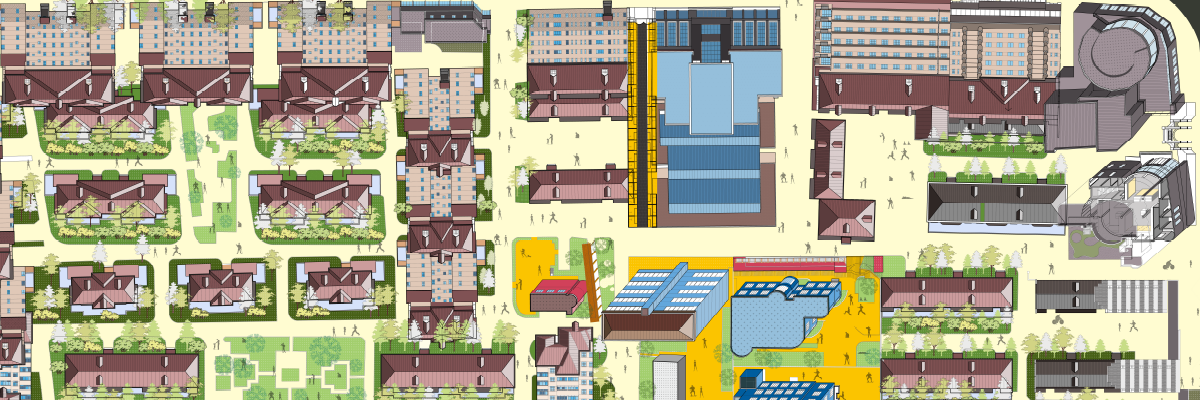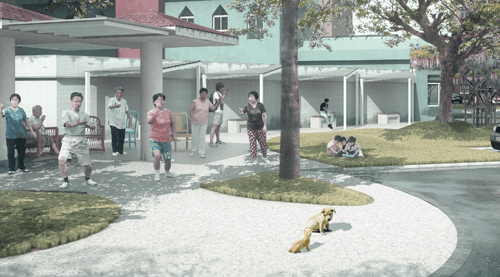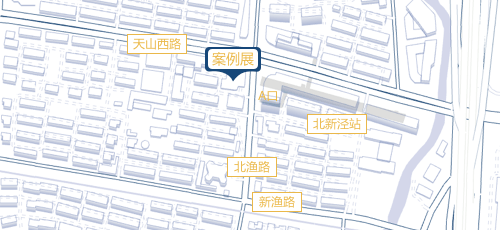Site Projects
-
Better Community, Better Life — Site Project of Pudong Colorful Community
-
Xinjing · New Scope — Site Project of Urban Regeneration in Beixinjing, Changning
-
Urban Micro Intervention: Musicify the Community — Site Project of Shanghai Music Valley Hongkou
-
Dual Radiation — Site Project of Urban Renewal at West Bund, Xuhui
-
Linking Zikawei — Site Project of Xuhui
-
“Double Exposure·Factory Rebirth” Jing'an Innovation Galaxy Site Project
-
Design Approach of Local and Historical Characters — Site Project of Xuhui
-
2017 “Iconic Shanghai” Series Exhibition

Xinjing · New Scope — Site Project of Urban Regeneration in Beixinjing, Changning
Host
- People’s Government of Changning District, Shanghai
Organizers
- Changning Planning and Land Authority
- Sub-district Office of Beixinjing, Changning District
Co-organizers
- Construction and Traffic Committee of Changning District
- Culture Bureau of Changning District
Project Introduction
The Beixinjing community is located in the middle-northern area of Changning District, enveloped by Xinyugang (new fishing port), Songhong Road, Suzhou Creek, YuanfengTianshan Garden, West Tianshan Road and Beihong Road. The 140.35 hectare region has its root in Beixinjing Town, which was founded more than seven hundred years ago. Currently, most part of Beixinjing consists of old residential communities. Its environment calls for improvement, and amenities and public spaces for events are in lack of energy. In the last two years, the administration office has initiated “micro-revitalization” projects to improve the environment and amenities in a targeted manner. Until October 2017, 22 projects have been completed, covering urban system renewal (medium renovation and landscape transformation of West Tianshan Road), urban public space renovation (renovation of street corner square at Pingtong Road and Jinzhong Road, etc.), community amenities renewal (renovation of three pavilions in No.7 Xinjing Village, etc.) and public art projects (wall renovation of Jinzhong Road, etc.) “Xinjing · New Scape , Site Project of Urban Regeneration in Beixinjing, Changning” is a comprehensive collection and display of the pilot micro-revitalization projects.
Theme Interpretation
“Xinjing· New Scape” attempts to echo the main theme “thisCONNECTION: Sharing a Future Public Space” from three aspects: infrastructure, say, roads and bridges, that closes physical ruptures in urbanity; revitalizing the existing modes of communal space; and promoting the dialogue between citizens and urban topics. “Xinjing· New Scape” echoes “thisCONNECTION” in terms of physical structures and life style alike, which itself is a channel, leading the concept of urban space into the sphere of community.
This exhibition will demonstrate the practices conducted by Beixinjing Sub-district Office, whose latest experiments are new pilot projects launched in 2017. These movements bring a new context and perspective to Beiixnjing area, and inspire the theme of this exhibition, that is “Xinjing· New Scape”.
After two years of exploration, we believe the topic of regeneration should be extended from the renovation of micro public amenities to the construction of urban system, by introducing issues closely related to everyday life, such as street section, road section, public facilities. Due to the typicality embodied in Beixinjing area, the exhibition will open a fresh observation distance and perspective.
Exhibition
Site Project Regeneration in Beixinjing, Changning is composed of three parts, namely “Urban Regeneration in Xinjing”, “Exhibition in Community” and “Academy in Everyday Life”. “Urban Regeneration in Xinjing” highlights conceptions and implementations at two scales: communal amenities and urban system. The communal part summarizes the pilot projects conducted in Beixinjing from 2016 to 2017, including revamping of Jinzhong Rd and Pingtang Rd street corner, communal center in Xinjing 5th New Village, etc; while the other, which is broader and more general, switches to urban systems, which includes the proposals for West Tianshan Rd renovation and comprehensive upgrade of Beixinjing Area. “Exhibition in Community” stands for the idea that this exhibition is placed in everyday life with a pedestrian route that connects all pilot projects and the opening /closing ceremonies, among others, that are integrated into the Beixinjing communal space. Several forums, performances and outdoor events constitute “Academic in Everyday Life”, where local residents, researchers and professionals of urban planning, architecture, community empowerment are invited to contribute their thoughts on a range of topics.
It is worth mentioning that, the main venue of Site Project Regeneration – Changning Folk Culture Center will be under renovation during exhibition. Being another site of urban regeneration, it becomes the microcosm of the whole progress.
Events
Opening Ceremony
Date: late October 2017
Venue: 1st Floor & 2nd Floor, South Building, Changning Folk Culture Center
Theme Forum: West Tianshan Road – Slow Walk in City
Date: early November 2017
Venue: Warehouse 257, MinSheng Silo of 80,000 tons
Community Walk Tour for Children
Date: 18 November, 2017
Venue: various micro-revitalization sites of Beixinjing
Theme Forum: Xinjing Villages – Community Revitalization
Date: 25 November, 2017
Venue: 1st Floor & 2nd Floor, South Building, Changning Folk Culture Center (No. 95 Beiyu Road, Changning District)
Typeface Workshop in Beixinjing
Date: early December, 2017
Venue: various micro-revitalization sites of Beixinjing



Venue
1st Floor & 2nd Floor, South Building, Changning Folk Culture Center (No. 95 Beiyu Road, Changning District)

Period
Late October 2017 – 12 January 2018

Public Transportation
Metro: Exit 3, Beixinjing Station (Line 2)
Bus: West Tianshan Road and Jianhe Road Stop (Line 825, 808, 141, 855)
Curators

Zhang Jiajing
Zhang Jianjing is founder and principal architect of Atelier GOM. He is guest lecturer in Shanghai Jiao Tong University, board member of Shanghai City Planning Expert Committee. His works include Long Nan Jia Yuan public rental housing, Fu Lin Jia Yuan public rental housing, De Fu middle school in Jiading, Community Center in New Jiangwan. He has curated PSA “Spectacle: 12 Presentations of Contemporary Museum Architectures in China”, photography exhibition in Studio MOA, West Bund. His works have been exhibited in Milan Triennale, MOCA architecture space art exhibition, and Shenzhen/Hong Kong UABB, etc.

Zhou Jianjia
Zhou Jianjia is founder and principal architect of YeArch Studio, guest lecturer of Tongji University, guest lecturer of Hong Kong University Shanghai Study Center. She rethinks and responds to the contemporary condition of Chinese cities via architecture, drawing, writing and installation. Her works have been exhibited on Open Your Space, 2015 SUSAS, Shenzhen/Hong Kong UABB, “NYC x Design: Nature/Architecture”, Chengdu Biennale, etc.